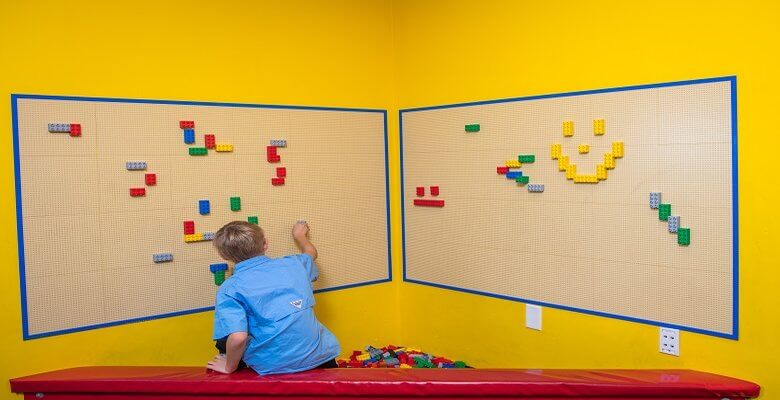By
Sheri Kendall
|
Date Published: March 04, 2020 - Last Updated September 08, 2020
|
Comments

When you have a child on the Autism spectrum, you gain an unusual view of the customer experience. By the time my youngest son was 6 years old, I understood that most barber shops, grocery stores, restaurants, doctors offices, dentists, and recreational activities were not built for us.
We created our own solutions. We cut hair at home, used the drive-thru for meals, and relied on open spaces like parks for recreational activities. Grocery shopping remained traumatic, so I became a master at getting through the store in under 15 minutes.
One thing you quickly come to appreciate is inclusive design in all things, the kind of design that allows my son to be in a locale or situation. In the blog post, “The No. 1 Thing You’re Getting Wrong About Inclusive Design,” Kat Holmes shares Susan Goltsman’s definition of inclusive design: “Inclusive design doesn’t mean you’re designing one thing for all people. You’re designing a diversity of ways to participate so that everyone has a sense of belonging.”
In other words, the underlying principle of an inclusive customer experience (CX) is that every customer has the right to full and equal participation in that experience.
Inclusive CX designers resist the urge to solve problems they don’t understand and commit to working with customers that navigate exclusionary customer experiences in the redesign. Here’s what that might look like:
- At a grocery store, inclusive design might include parking spaces for families with children on the Autism spectrum, grocery carts with a five-point harness, a sensory room, and staff trained to recognize families that are in need of extra support.
- At the local YMCA, inclusive design might include a sensory evening with low lighting, trained staff, and small class sizes.
- Inclusive design at a restaurant might be as simple as instructing staff to ask patrons if they prefer a low-traffic area.
The CDC reports that 1 in 4 adults living in the US have a disability, including 1 in 59 children that have been identified with autism spectrum disorder (ASD). If your CX initiative fails to consider the needs of these customers, the loss of potential revenue is staggering.
The Temkin Group states that CX is made up of three components – success, effort, and emotion. Their research found that while all three elements impact customer loyalty, an improvement in emotion drives the most significant increase in loyalty. Imagine the impact on the customer experience your organization provides if every interaction with your business results in frustration, embarrassment, and shame. Now imagine, the opposite - the gratitude and loyalty earned by families and individuals who feel truly included in your company’s CX.
A recent study published by the Temkin group discovered that companies earning $1 billion annually would soon expect to earn an additional $700 million by investing in CX. If your investment were to include inclusive CX initiatives, the ROI might exceed even these lofty expectations.
Here are three steps to begin the journey toward inclusive design:
Step One: Map the customer journey
The process for this is similar to traditional customer journey mapping, but with the customer with disability (or disabilities) in mind:
- Set clear objectives for the map.
- Profile your personas and define their goals.
- Include personas of customers that experience a disability and define their goals.
- Identify the touchpoints that become pain points for customers that experience a disability.
- Identify the elements you want your map to show.
- Take the customer journey yourself.
- Invite members of your focus group to journey their experience.
- Make the necessary changes.
Step Two: Train
As your team identifies the pain points for customers that experience a disability, ask your training team if these problems can be solved through training, coaching, or other experiential learning experiences. For example, Great Western Railway provided Autism awareness training for over 3500 frontline staff. Some Legoland workers now receive specialized training to help them effectively interact with guests on the autism spectrum and their families.
Step Three: Measure
This may require new metrics or a reconfiguring of traditional metrics that factor in the special needs of this expanded customer base. Whatever metric you decide to utilize, make sure that you measure the things that are most important to your customers, including those experiencing disabilities, and that you can draw actionable insights from those metrics and put them to use right away.
There’s a moral imperative to inclusive design, but it’s also a huge opportunity to increase revenue, strengthen brands, and create better employee and customer experiences.